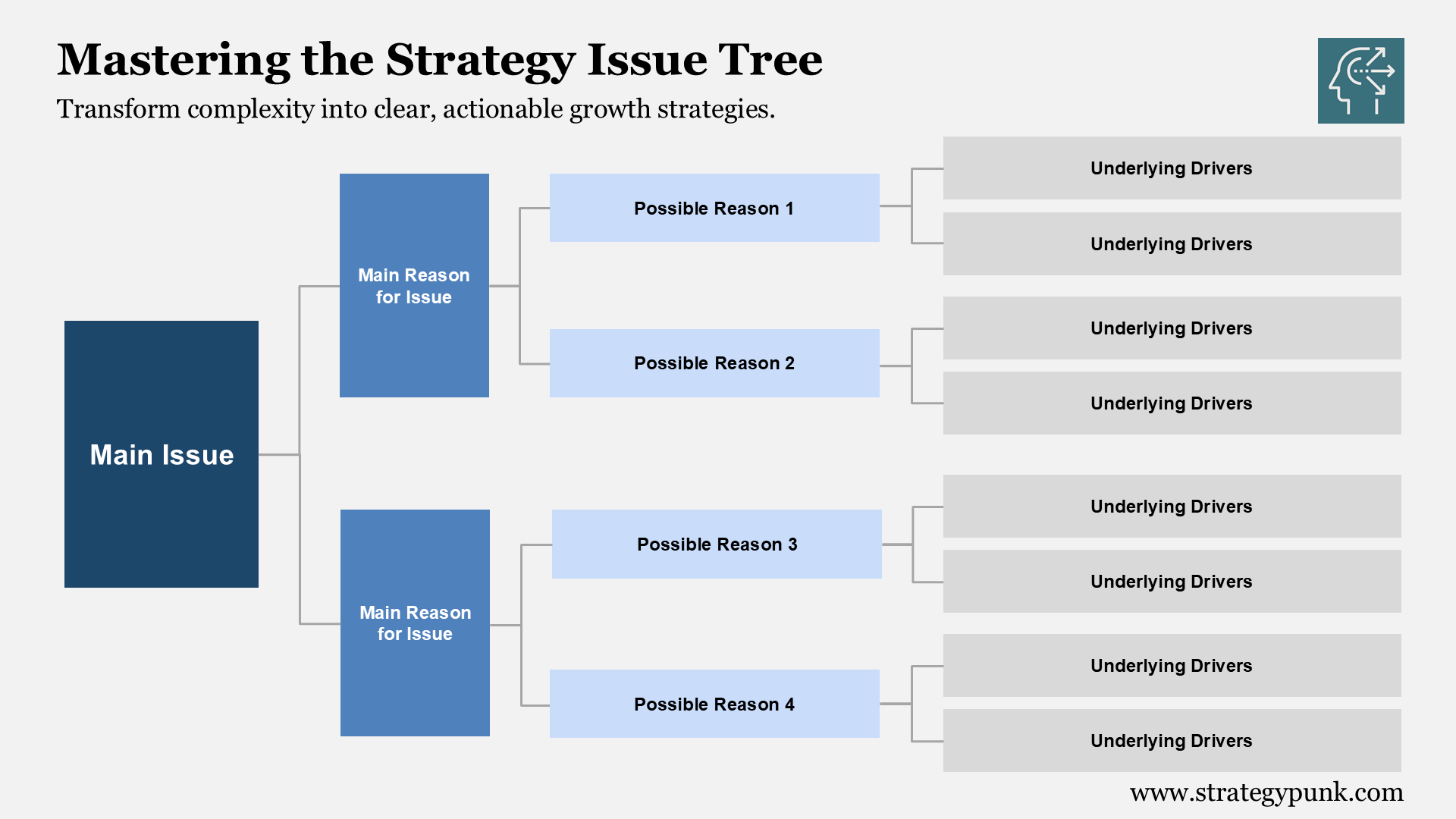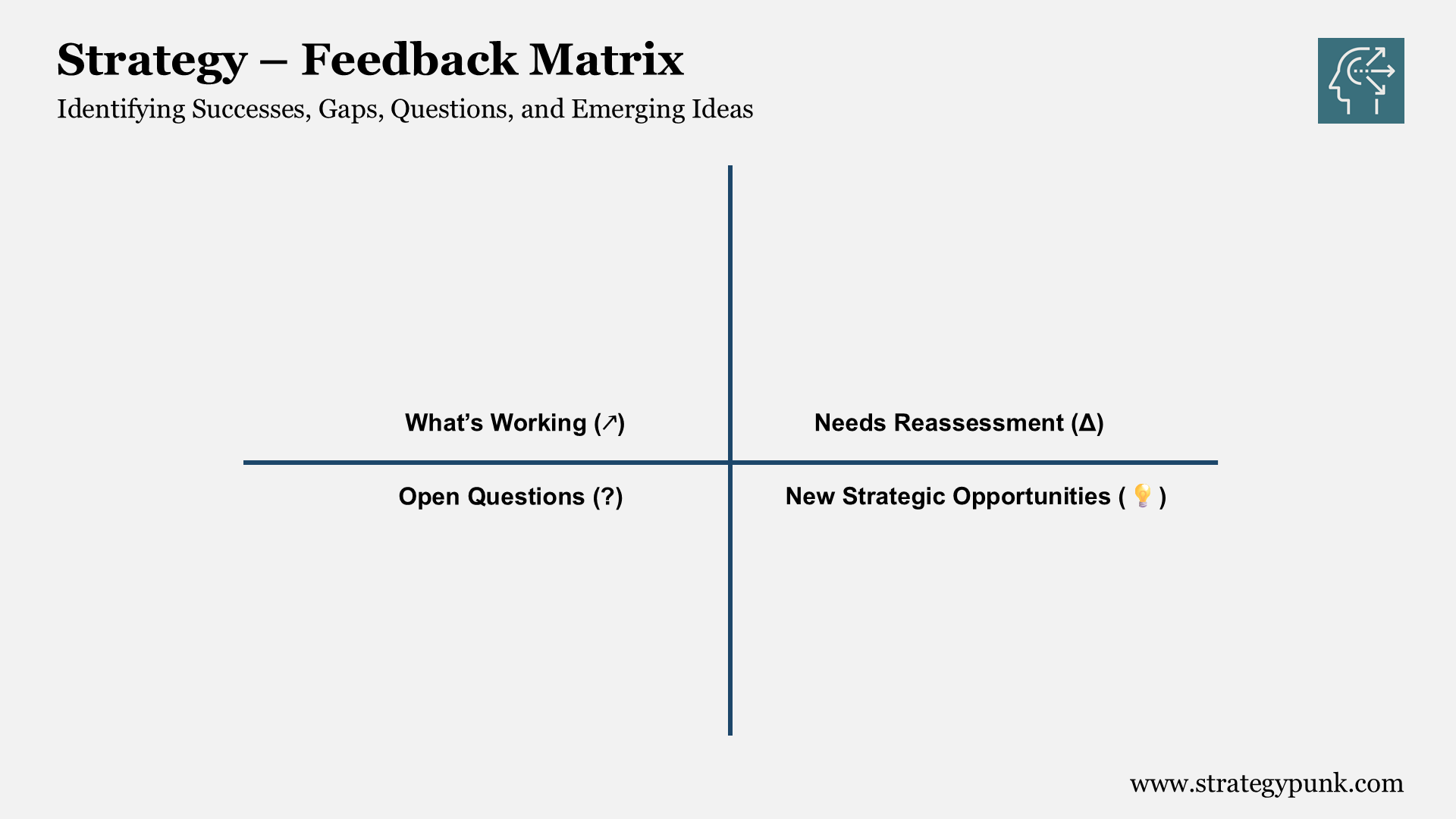How to Write a Business Plan in 10 Steps (With FREE Template)
Discover how to write a business plan in just 10 steps! Access our comprehensive PowerPoint and PDF templates to streamline your process. Ready to write your business plan? Start here.

Have you ever wondered how the likes of SpaceX or Beyond Meat charted their course to industry dominance?
Spoiler alert: A meticulously crafted business plan was at the heart of their strategy.
If you're gearing up to launch your venture or scale it to new heights, a business plan isn't just a good thing to have; it's your roadmap to success.
I'd like you to take a look at this guide, which is peppered with real-world examples and actionable insights. In it, we break down the art of creating a business plan into nine digestible steps.
Ready to set the stage for your business triumph? Let's dive in!

1. The Elevator Pitch - Draft an Executive Summary
Imagine stepping into an elevator with a potential investor, and you have moments to encapsulate your business's essence. This is the challenge of the elevator pitch, and at the heart of it lies the Executive Summary. Often considered the gateway to your business plan, the Executive Summary is a snapshot, providing a tantalizing glimpse into the world you're building.
First Impressions Matter. The Executive Summary is not just an introduction; it's an invitation. It should succinctly convey your business's core concept, unique selling proposition, and growth potential. While it's positioned at the beginning of your business plan, it's often recommended to pen it last, ensuring it distills the essence of the detailed sections that follow.
The Essence of Brevity. An impactful Executive Summary is both concise and compelling. It should encapsulate the business's mission, vision, product or service offerings, target market, and a brief overview of financial projections. Think of it as a trailer for a blockbuster movie; it should entice the reader to delve deeper into the subsequent sections of the business plan.
In the grand tapestry of your business plan, the Executive Summary is the golden thread that weaves everything together. It's the first impression and, often, the lasting one. So, as you stand poised at the threshold of your entrepreneurial journey, please make sure that your Executive Summary is an overview and an overture, setting the stage for the following symphony of success.
Think of this as the trailer to your business's blockbuster movie. It's a snapshot, offering a glimpse into what your business is all about. Highlight your business's essence, vision, and what sets you apart. Remember, this is your first impression if you're pitching to investors. Make it count!
2. The Heartbeat - Write a Company Description
At the core of every thriving enterprise lies its essence, its heartbeat - the Company Description. This section is not just a narrative; it's the soulful story of your business, painting a vivid picture of who you are, what you stand for, and the journey you envision. It's the foundation upon which the rest of your business plan is built, offering readers a clear lens into your company's ethos and aspirations.
Diving Deep into Identity. A compelling Company Description goes beyond the surface. It delves into the very DNA of your business, encapsulating its mission, vision, and core values. It should articulate the problems you aim to solve, the solutions you offer, and the unique value proposition that sets you apart in the marketplace. This section is your opportunity to showcase the passion, purpose, and potential that drive your venture.
Crafting a Compelling Canvas. Think of your Company Description as a canvas, where each brushstroke adds depth and dimension. It should encompass the structure of your business, its history, and its future aspirations. Whether you're a budding startup or an established enterprise, this section should resonate with authenticity, reflecting the heart and soul of your brand.
The Company Description is the vibrant thread that brings your vision to life in the intricate tapestry of your business plan. The narrative informs and inspires, drawing readers into the world you're creating. As you embark on this entrepreneurial odyssey, please ensure that your Company Description is not just an account but an anthem, echoing the passion and promise of your venture.
Who are you, and what's your mission? This section is your chance to introduce your business to the world. Dive into your business's ethos, unique selling points, and objectives. Think of brands like Patagonia and their commitment to sustainability; that's the passion and clarity you want to convey.
3. The Landscape - Perform a Market Analysis
Understanding your terrain is paramount in the vast expanse of the business world. The Market Analysis serves as your compass, guiding you through the intricate landscape of your industry, illuminating opportunities, and highlighting potential pitfalls. It's not merely a section in your business plan; it's the lens through which you view the world, ensuring that your venture is viable and valuable in the marketplace.
Deciphering the Dynamics. A robust Market Analysis dives deep into the currents of your industry. It assesses your target market's size and growth potential, identifies key players and competitors, and decodes consumer behaviors and preferences. This section is your chance to showcase your understanding, showing that you know the market trends and are adept at leveraging them to your advantage.
Crafting a Strategic Stance. With the insights gained from your Market Analysis, you can carve out a distinct position in the industry. Whether identifying an underserved niche, understanding the pricing strategies that resonate with your audience, or pinpointing the channels that offer maximum visibility, Market Analysis provides the intelligence to make informed decisions. It's the foundation upon which your strategies are built, ensuring that your business moves purposefully and precisely.
In the grand scheme of your business journey, Market Analysis is your roadmap. It offers clarity amidst complexity, ensuring that every step you take is grounded in research and resonates with relevance. As you chart your course in the business world, let your Market Analysis be the beacon that guides you, illuminating the path to success and sustainability.
Would you set sail without a compass? You'll need to understand your market. I'd appreciate it if you could delve into current market trends, identify competitors, and understand potential customers. This section is about showing that you've done your homework and are ready to navigate the business waters precisely.
4. The Dream Team - Outline the Management and Organization
In the intricate dance of business, while strategy and vision set the rhythm, the people truly make the magic happen. The Management and Organization section of your business plan is where you introduce the maestros behind the curtain, the individuals steering the ship through both calm and stormy seas. This isn't just about listing names and titles; it's about showcasing the collective expertise and passion that propels your venture forward.
The Pillars of Leadership. Every successful venture stands tall on the shoulders of its leaders. In this section, delve into your key team members' backgrounds, experiences, and unique strengths. Highlight their past achievements, industry expertise, and the specific roles they'll play in driving your business's growth. Whether it's the visionary CEO with a track record of successful startups or the tech genius who's revolutionized processes in their previous roles, this is your chance to spotlight the human capital that sets your business apart.
Structuring for Success. In addition to the individuals, it's essential to outline the organizational structure to help your operations. Will you lean towards a flat hierarchy, promoting open communication and collaboration? Or may a more traditional, tiered system better suit your industry and goals? Accompanied by an organizational chart, this section should clarify roles, responsibilities, and reporting lines, ensuring that current and potential stakeholders understand how decisions are made and tasks are executed.
In the grand tapestry of your business narrative, the Management and Organization section is where you weave in the threads of leadership and structure. It assures stakeholders that you have a compelling vision and the right team and organizational framework in place to turn that vision into a vibrant reality. Remember, businesses thrive not just on strategies but on the people who bring them to life.
Behind every significant venture is a team of dedicated individuals. Highlight your business's key players, roles, and expertise. Whether you're a solo entrepreneur or have a diverse team, showcase the brains behind the operation.
5. The Offer - List Your Products and Services
In the bustling marketplace of ideas and innovations, what truly sets a business apart is its unique offering to the world. The Products and Services section of your business plan is your stage, where you unveil the stars of your show. It's not just about listing items or services; it's about painting a vivid picture of the solutions you provide, the needs you address, and the value you deliver.
The Spotlight on Solutions. You can start by diving deep into the core of your offerings. What problems are they designed to solve? How do they enhance your customers' lives or fill a market gap? Whether it's groundbreaking software that streamlines workflows or a handcrafted product that adds a touch of luxury to everyday life, this is your chance to showcase the benefits and features that make your offerings stand out.
Diversity in Delivery. In today's dynamic business landscape, versatility is vital. Highlight the range and variety of your products and services. Provide a clear breakdown if you offer multiple product lines or varied service tiers. This demonstrates the breadth of your offerings and caters to a diverse clientele with various needs and budgets.
Crafting the Products and Services section is akin to curating a gallery. Each product or service is a masterpiece, reflecting your business's ethos, passion, and commitment to excellence. It invites potential stakeholders and customers to experience the value you bring. In this section, you're not just listing items; you're telling a story of innovation, dedication, and the relentless pursuit of delivering unparalleled value.
What's on your offering menu? Detail the products or services you're offering. Whether you're launching a groundbreaking tech product or a new line of vegan snacks, ensure your audience understands your value.

6. The Audience - Perform Customer Segmentation
In the vast arena of business, knowing your audience is the compass that guides every decision. Customer segmentation is not just a section in a business plan; it's the lens through which you view your market, allowing you to tailor your offerings and strategies to resonate with the right crowd. It's about understanding the myriad faces in public and crafting a message that speaks directly to each one.
The Mosaic of Markets. Imagine a tapestry, each thread representing a different segment of your audience. Some lines represent age groups, others geographical locations, and yet others, specific behaviors or interests. By weaving these threads together, you get a vivid picture of your customers, their desires, and how they interact with the world. Whether it's the tech-savvy millennials, the eco-conscious urbanites, or the luxury-seeking retirees, each segment has unique characteristics and needs.
Strategies Tailored to Tastes. With a clear understanding of your customer segments, you can craft strategies that resonate. It's like curating a playlist for different moods and occasions. Your marketing campaigns, product features, and customer service protocols can be fine-tuned to appeal to each segment. This personalized approach enhances customer experience and optimizes resource allocation, ensuring your efforts and investments are channeled where they matter most.
Diving into customer segmentation is akin to being a maestro, understanding each instrument's unique notes and rhythms, and orchestrating a symphony that captivates the audience. It's a dance of data and intuition, where insights drive innovation, ensuring that your business reaches its audience and resonates, engages, and builds lasting relationships.
Only some people are your customers, and that's okay. Could you define who you're targeting? Are you catering to tech-savvy millennials or eco-conscious Gen Z? Pinpointing your audience ensures that your marketing efforts hit the bullseye.
7. The Megaphone - Define a Marketing Plan
In the bustling marketplace of ideas and products, standing out is both an art and a science. A marketing plan isn't just about shouting the loudest; it's about ensuring your voice carries the right message to the right ears at the right time. It's the megaphone that amplifies your brand's story, values, and offerings, ensuring they echo in the hearts and minds of your audience.
The Symphony of Strategy. Think of a marketing plan as a musical score, where every note, every pause, and every crescendo is meticulously crafted. It begins with understanding your audience, their desires, and their pain points. Then, it's about choosing the suitable instruments - social media campaigns, influencer partnerships, or traditional advertising - and playing them harmoniously to create a resonant melody. Each strategy, whether a catchy jingle or a viral video, is a note in this grand composition, aiming to captivate and convert.
Adapting to the Audience's Rhythm. The beauty of a well-crafted marketing plan lies in its adaptability. Just as a maestro might tweak a performance based on the audience's reaction, a business must be ready to pivot its strategies based on market feedback. This means constantly monitoring performance metrics, staying attuned to industry trends, and being agile enough to capitalize on new opportunities or address challenges head-on.
Ultimately, a marketing plan is more than just a blueprint; it's a living, breathing entity that evolves with your business and audience. It's about striking the right chords, creating a symphony of strategies that reach the masses and touch individual souls, turning casual listeners into loyal fans.
How do you plan to shout your brand's name from the rooftops? Whether leveraging the power of social media or diving into grassroots marketing, chalk out your strategy. Remember, it's not just about reaching your audience; it's about resonating with them.
8. The Engine Room - Provide a Logistics and Operations Plan
Behind every successful venture lies the intricate machinery of logistics and operations, often unseen but undeniably vital. It's the engine room of a business, where ideas are transformed into tangible products, and strategies are executed with precision. While the spotlight often shines on the end product or service, the logistics and operations plan ensures the show runs smoothly, efficiently, and sustainably.
The Choreography of Coordination. Imagine a ballet performance where every leap, twirl, and step is perfectly synchronized. Similarly, a logistics and operations plan is about orchestrating a dance of various elements - from sourcing raw materials to ensuring timely deliveries. It's about mapping out the journey of a product, from conception to the consumer's hands, ensuring that every stage, be it manufacturing, storage, or distribution, is optimized for efficiency and cost-effectiveness. This choreography is crucial not just for meeting business objectives but also for delivering consistent value to customers.
Adapting to the Ebb and Flow. Just as a ship's captain must be prepared to navigate through calm seas and stormy waters alike, businesses must be equipped to handle the dynamic challenges of the market. A robust logistics and operations plan is not set in stone; it's flexible, allowing businesses to adapt to changing circumstances, be it a sudden surge in demand, supply chain disruptions, or technological advancements. It's about having contingency plans, alternative routes, and the agility to pivot when needed.
While a business's external facade might be its products, marketing, or brand image, its logistics and operations plan form its backbone. The silent force keeps the wheels turning, ensuring businesses survive and thrive in the competitive marketplace.
The behind-the-scenes magic. Detail how you'll source materials, manage production, handle shipping, and everything else. This section showcases that you have a robust system for consistently delivering.
9. The Treasure Chest - Make a Financial Plan
In the grand tapestry of business, if strategy and vision are the threads, then the financial plan is the loom of everything. The treasure chest safeguards a company's future, ensuring every decision is grounded in fiscal responsibility and foresight. While the allure of innovation and marketing might capture the imagination, the financial plan translates dreams into actionable, sustainable realities.
It is mapping the Business Odyssey. Every entrepreneurial journey is filled with aspirations, but the financial roadmap dictates these aspirations' pace, direction, and viability. A comprehensive financial plan delves deep into the numbers, projecting revenues, analyzing costs, and forecasting profits. It's not just about crunching numbers; it's about understanding the story they tell - where the business stands today, where it aims to be tomorrow, and the financial milestones along the way. This roadmap serves as both a guide and a barometer, helping businesses navigate challenges and capitalize on opportunities.
The Pillars of Stability. Within the financial plan lie the pillars that uphold a business's stability: the income statement reflecting profitability, the balance sheet showcasing assets and liabilities, and the cash flow statement, the lifeline that ensures operations run smoothly. Together, these documents offer a panoramic view of a company's financial health, enabling stakeholders, from investors to employees, to gauge the company's potential and resilience.
Ultimately, a financial plan is more than spreadsheets and projections. It's the treasure chest that contains the essence of a business's potential, challenges, and path to success. It's the tool that turns entrepreneurial dreams into tangible, sustainable enterprises, ensuring that the ship sets sail and reaches its destined shores.
Show me the money! Outline your financial projections, potential expenses, and revenue streams. Whether you're bootstrapping or seeking investment, a clear financial plan showcases that you're in this for the long haul and have a clear path to profitability.
10. The Captain's Log: Charting Your Course with a Timeline
In the vast ocean of entrepreneurship, where unpredictable currents can sway even the most robust vessels, the Captain's Log serves as the compass, guiding businesses through both calm and stormy waters. Much like the seasoned captains of old, who meticulously recorded their journeys, today's business leaders need a timeline—a Captain's Log—to chart their course, ensuring they remain on the right path towards their destined harbor.
Anchoring Vision to Reality. The Captain's Log, or the business timeline, is not just a record of where you've been but a beacon illuminating where you're headed. It captures the milestones, the challenges overcome, and the victories celebrated. Each entry is a testament to the company's journey, offering insights into past decisions and their outcomes. But more crucially, it provides a structured framework for the future, setting clear objectives, deadlines, and benchmarks. This timeline becomes the rhythm to which the business marches, ensuring that every crew member, from the deckhand to the first mate, is synchronized in purpose and pace.
The Legacy of Lessons Learned. As with any journey, the business path is filled with lessons—some hard-earned, others serendipitous. The Captain's Log preserves these lessons, ensuring they become part of the company's legacy. Future endeavors can draw from past experiences, avoiding pitfalls and capitalizing on proven strategies. It's a living document, evolving with each entry, reflecting the company's growth, adaptability, and resilience.
The Captain's Log is more than just a timeline; it's the soul of the business journey. The narrative tells the tale of a venture's past, present, and future, ensuring that no matter how tumultuous the seas are, the ship remains steadfast, with its eyes firmly set on the horizon.
Every epic voyage has milestones, ports of call, and moments of reflection. When do you envision reaching each landmark as you embark on this business journey? By setting a clear timeline for your goals, you're not just dreaming but committing. It's the rhythm to your business song, ensuring you dance to the beats of progress and pause to celebrate the milestones. Remember, it's not just about the destination but the journey, and a well-defined timeline ensures you savor every moment.
Wrapping Up
In the grand tapestry of business, a well-crafted plan is the thread that binds everything together.
Whether you're a budding entrepreneur or a seasoned business magnate looking to pivot, these steps will ensure your business plan is not just a document but a beacon guiding you to success. So, are you ready to chart your legacy?


How to Write a Business Plan in 10 Steps - PDF Template





